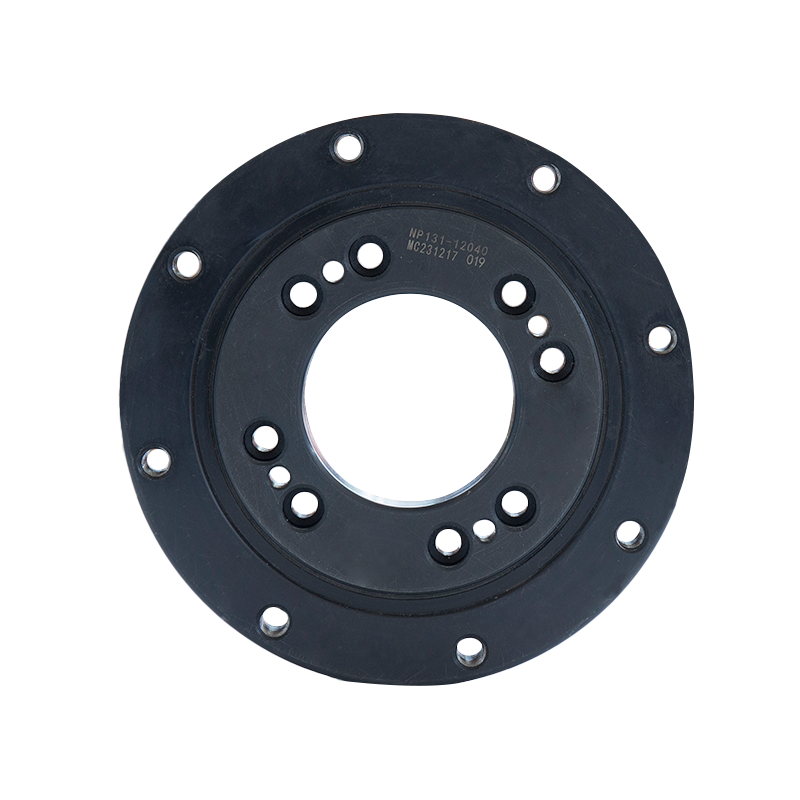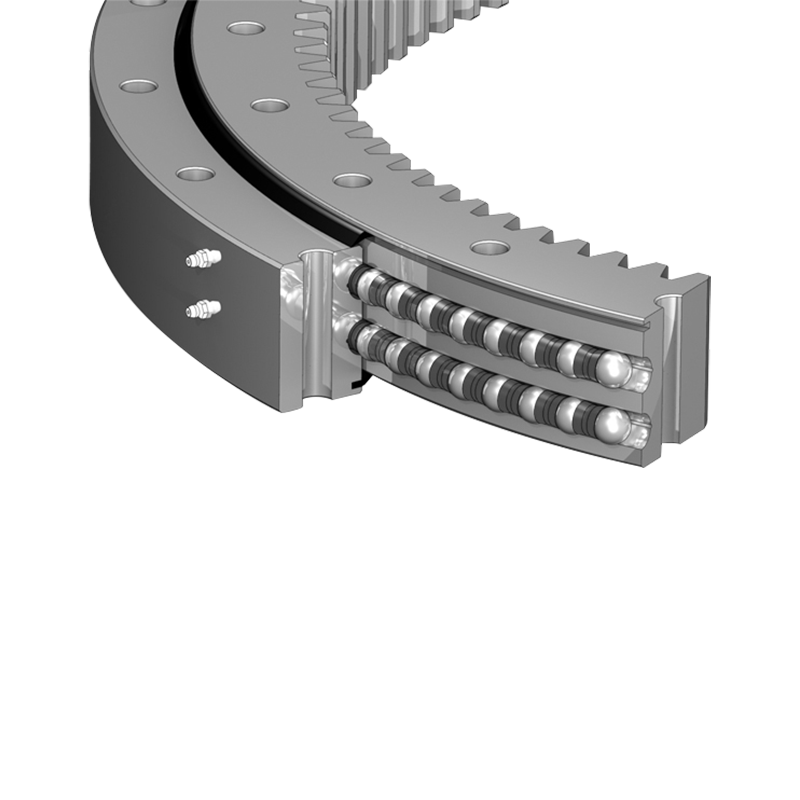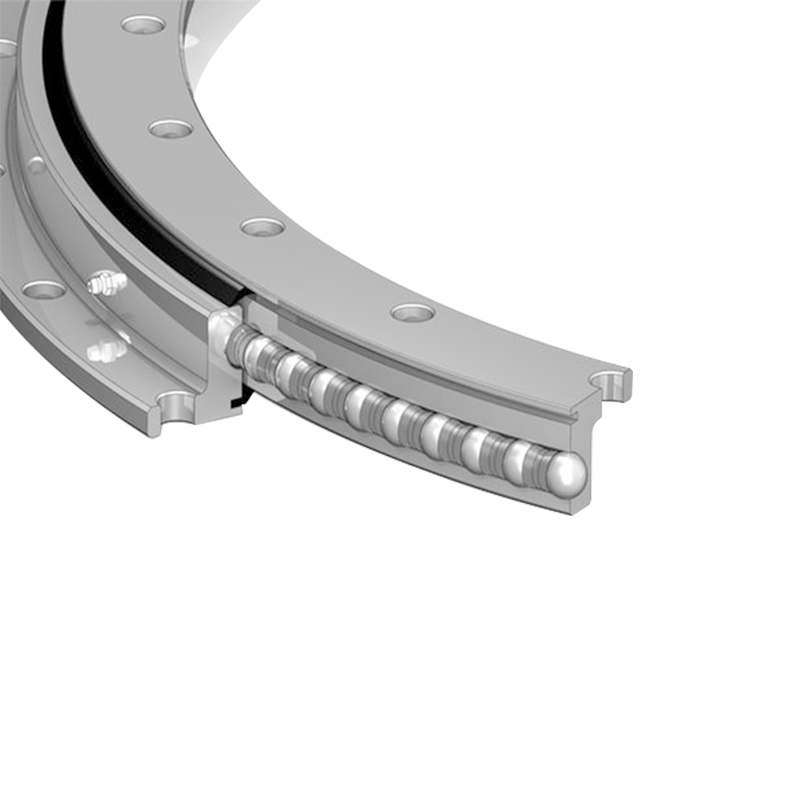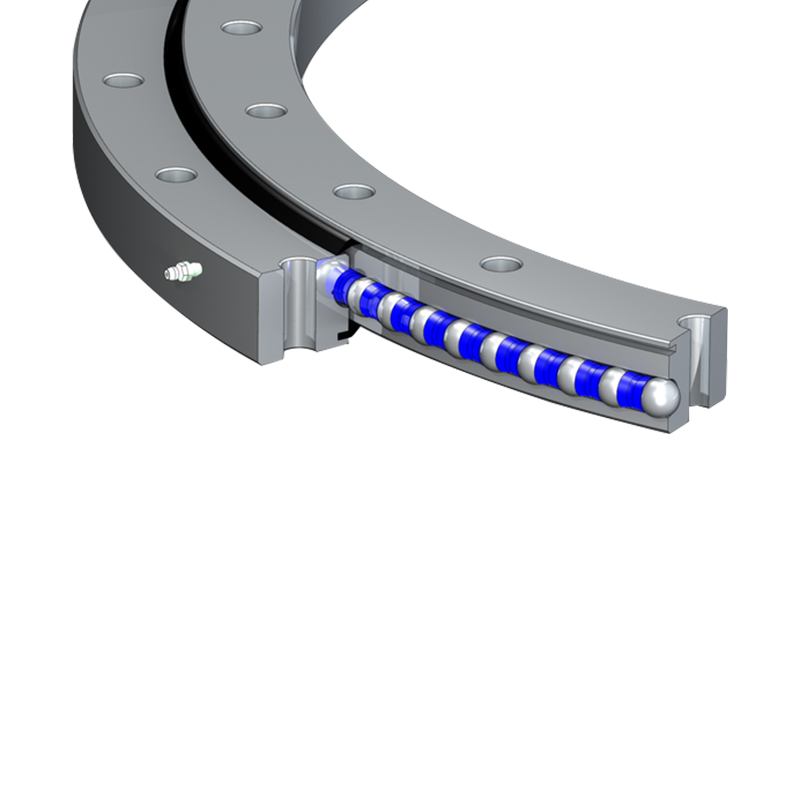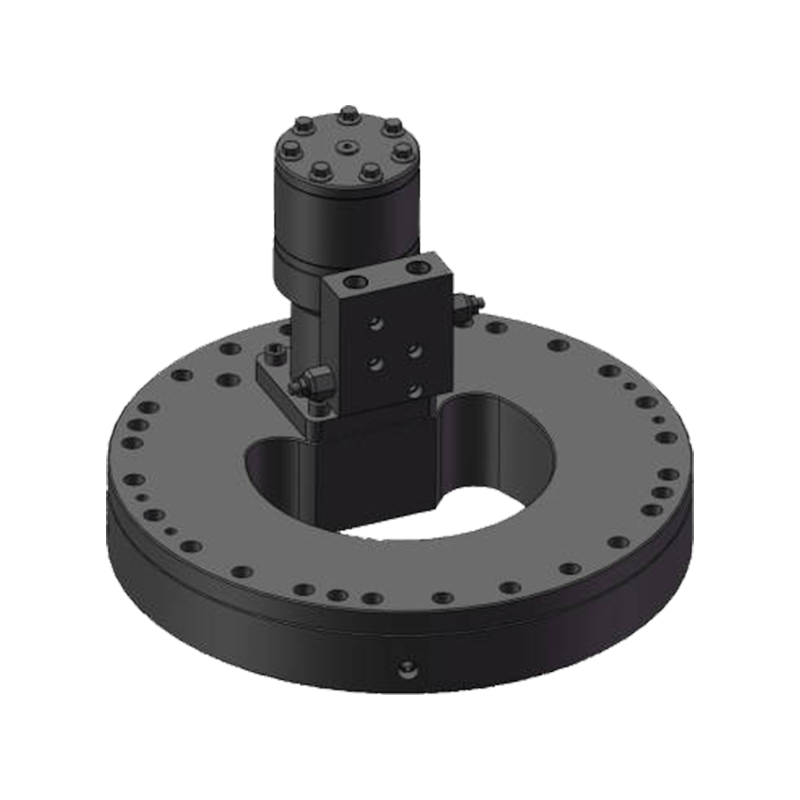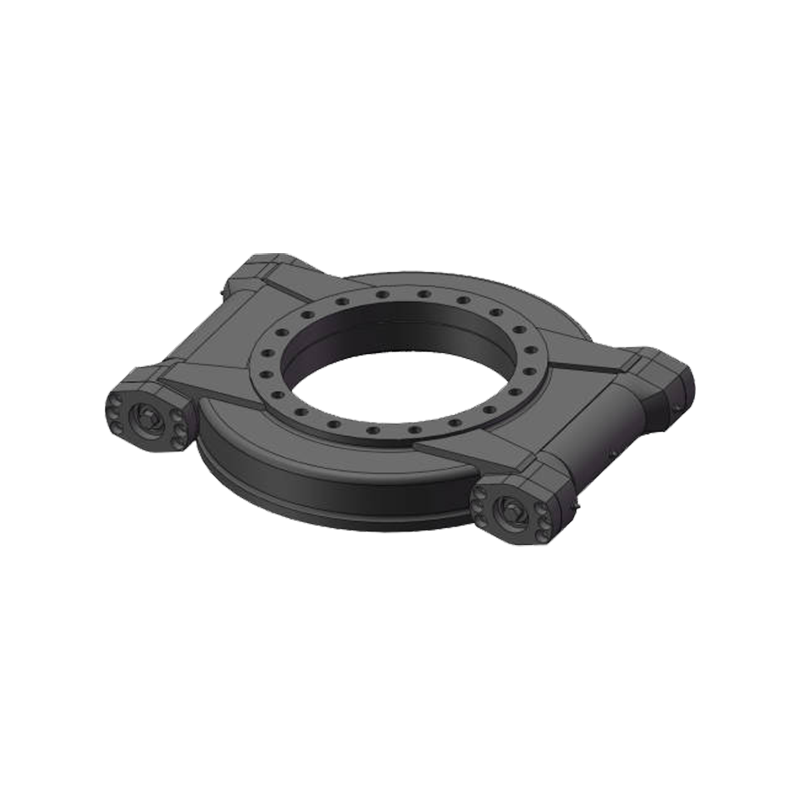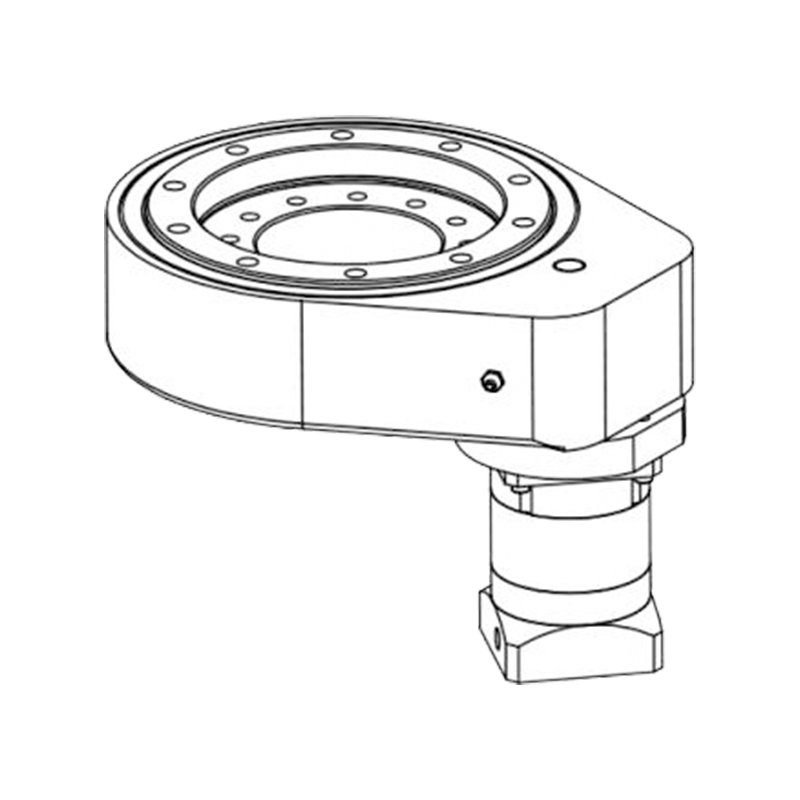What is a Three-Row Roller Slewing Bearing
 2025.07.10
2025.07.10
 Industry news
Industry news
Content
1. What is a Three-Row Roller Slewing Bearing?
A three-row roller slewing bearing is a large-diameter bearing designed to handle axial loads, radial loads, and tilting moments simultaneously. It achieves this through a unique structure that includes three independent rows of rollers, each tailored for a specific load direction. The designation "13 Series" typically refers to a standardized structural design or dimension series used by certain manufacturers, enabling easier selection and integration into industrial machinery.
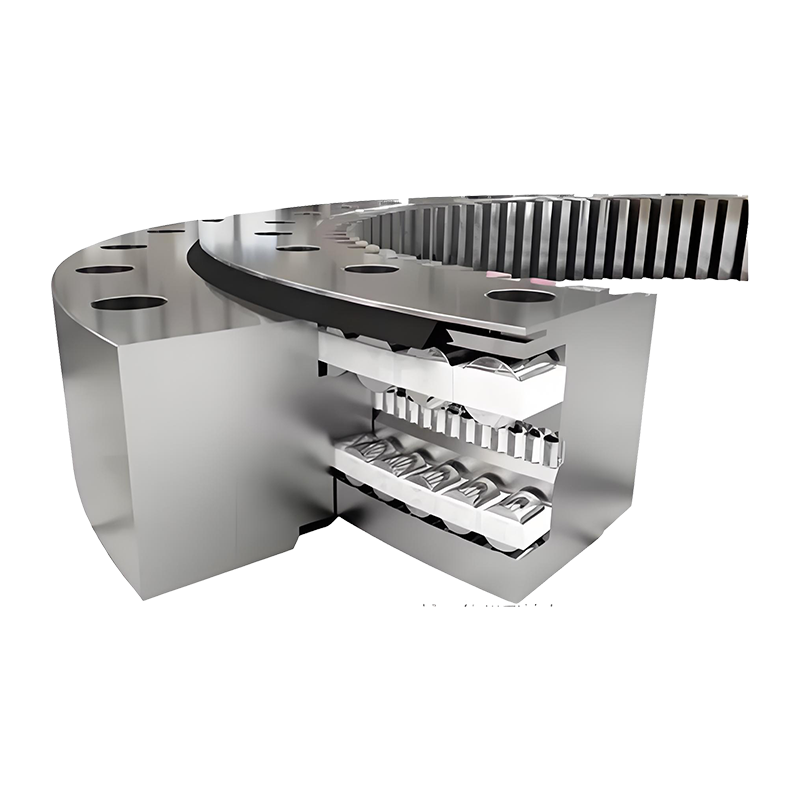
2. Structural Composition
The 13 Series Three-Row Roller Slewing Bearing generally consists of the following components:
Inner Ring and Outer Ring: These form the main structural frame of the bearing, often incorporating mounting holes for easy installation.
Three Rows of Rollers:
Axial Rollers (Upper and Lower Rows): Two of the three rows are designed to bear axial loads from both directions.
Radial Rollers (Middle Row): The central row handles the radial loads.
Raceways: Hardened tracks within the rings where rollers roll with minimal friction.
Seals: Prevent the ingress of contaminants and retain lubricants inside the bearing.
Spacers/Cages: Maintain roller separation and alignment.
The three-row configuration allows each type of load to be handled by a dedicated set of rollers, enhancing performance and service life.
3. Key Features and Benefits
High Load Capacity: This type of bearing offers the highest load capacity among slewing bearings, thanks to the separation of load paths.
Excellent Stability: Ideal for applications requiring a stable and secure rotation under dynamic forces.
Customizable Designs: Can be manufactured with internal gear, external gear, or without gear, depending on application needs.
Durability: Designed for long service life under extreme conditions when properly maintained.
High Torque Transmission: Can handle high moment loads, making it suitable for equipment with large rotating platforms.
4. Applications
The 13 Series Three-Row Roller Slewing Bearing is predominantly used in heavy-duty machinery, particularly where large moment loads and precision rotation are essential. Key application areas include:
Cranes: Truck-mounted cranes, tower cranes, and port cranes.
Excavators and Drilling Rigs: For swing systems that require robust rotational mechanisms.
Offshore Equipment: Used in marine cranes and oil rig equipment.
Wind Turbines: For yaw and pitch systems that control the orientation of the blades and nacelle.
Mining and Tunnel Boring Machines: Where equipment operates under heavy axial and radial loads.
Radar and Satellite Dishes: For precise rotational positioning.
5. Comparison with Other Slewing Bearings
| Feature | Three-Row Roller | Single-Row Ball | Double-Row Ball | Crossed Roller |
| Load Capacity | Very High | Low to Medium | Medium | Medium to High |
| Tilting Moment Resistance | Excellent | Poor | Good | Very Good |
| Size | Large | Compact | Medium | Compact |
| Cost | Higher | Lower | Moderate | Moderate |
| Application | Heavy-duty | Light-duty | General purpose | Precision equipment |
6. Selection Considerations
Choosing the right three-row roller slewing bearing requires understanding your application’s requirements:
Load Requirements: Consider the axial, radial, and tilting moment loads.
Rotational Speed: Not designed for high-speed applications; ideal for slow to moderate rotation.
Mounting Surface: Must ensure flatness and rigidity to avoid uneven stress.
Gear Configuration: Choose internal or external gear based on drive design.
Operating Environment: Special coatings or seals may be needed for corrosive or dusty environments.
Working with experienced bearing manufacturers can help ensure accurate calculations and optimized designs for your machinery.
7. Installation Guidelines
Proper installation is essential to achieve optimal performance:
1.Surface Preparation: The mounting surface must be clean, flat, and free of burrs.
2.Lifting: Due to their weight, use proper lifting tools and secure handling to avoid damage.
3.Bolt Tightening: Use a star pattern to evenly tighten bolts in stages. Follow torque specifications.
4.Gear Engagement: If using a geared version, check backlash and ensure correct meshing with the pinion.
5.Lubrication: Apply high-quality grease to all raceways and ensure uniform distribution.
6.Sealing Inspection: Check seals for proper fit to avoid lubricant leakage and contaminant entry.
8. Maintenance Tips
Regular maintenance helps maximize lifespan:
Lubrication Schedule: Re-grease after specific operation hours or according to manufacturer instructions.
Bolt Checks: Periodically inspect and re-tighten bolts to avoid loosening under vibration.
Seal Inspection: Look for wear or damage to prevent ingress of contaminants.
Noise and Vibration Monitoring: Any unusual sounds may indicate wear or damage that needs immediate attention.
Rotation Testing: Rotate the bearing slowly during downtime to distribute grease and detect early faults.
9. Common Failure Modes and Prevention
Wear from Misalignment: Ensure proper mounting and flatness during installation.
Overloading: Avoid exceeding rated capacities; select appropriately rated bearings.
Insufficient Lubrication: Use high-quality grease and follow a strict lubrication schedule.
Seal Failure: Replace seals periodically and choose materials compatible with environmental conditions.
10. Conclusion
The Three-Row Roller Slewing Bearing (13 Series) is a highly efficient and durable bearing solution for applications that demand high load-carrying capacity and stable rotation. Its specialized design allows for effective separation and management of different load types, making it an indispensable component in modern heavy-duty equipment. By understanding its structure, benefits, and maintenance needs, users can achieve improved performance, enhanced safety, and longer operational life from their machinery.



